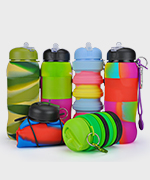Silicone Cooking Utensils' Advantages
Silicone cooking utensils have many characteristics, including longevity and visual appeal, that make them popular in modern kitchens. Utensils made with silicone present advantages and disadvantages when compared to their metal counterparts.
Background
Silicone comes in many forms, including liquid, plastic, gel or rubber. Prior to 2000, silicone was recognized primarily as a core ingredient in adhesives and sealants. More recently, silicone can be found in kitchen products ranging from baking pans to pastry brushes to cookware sets.
Characteristics
Characteristics of silicone that are useful in the kitchen include flexibility, a non-stick surface, and the ability to withstand high heat. Most silicone kitchen products can withstand up to 650 degrees
Fahrenheit before melting occurs. However, not all products are designed to withstand the same type of heat. For example, silicone bake ware is not designed to withstand direct contact with heat, such as on the stove top.
Maintenance
Silicone cooking utensils can be cleaned in the same way as regular cooking utensils, either by hand or in the dishwasher. Abrasive cleaning pads can scratch the surface of silicone and should be avoided. Silicone products should be cleaned regularly, even when not in use, because static electricity builds up on silicone and attracts dust. Storage of silicone products is simple, as the silicone's flexible nature allows it to fit comfortably into tight spaces and still snap back into shape the next time it is used.
Advantages
Silicone cooking utensils, such as tongs, spatulas or spoons, are less likely to corrode than their metal counterparts. Silicone utensils come in various colors, and their prices are favorable. Silicone bake ware, because of its non-stick nature, requires less butter and oil before baking, thereby decreasing the fat content in the prepared food.








